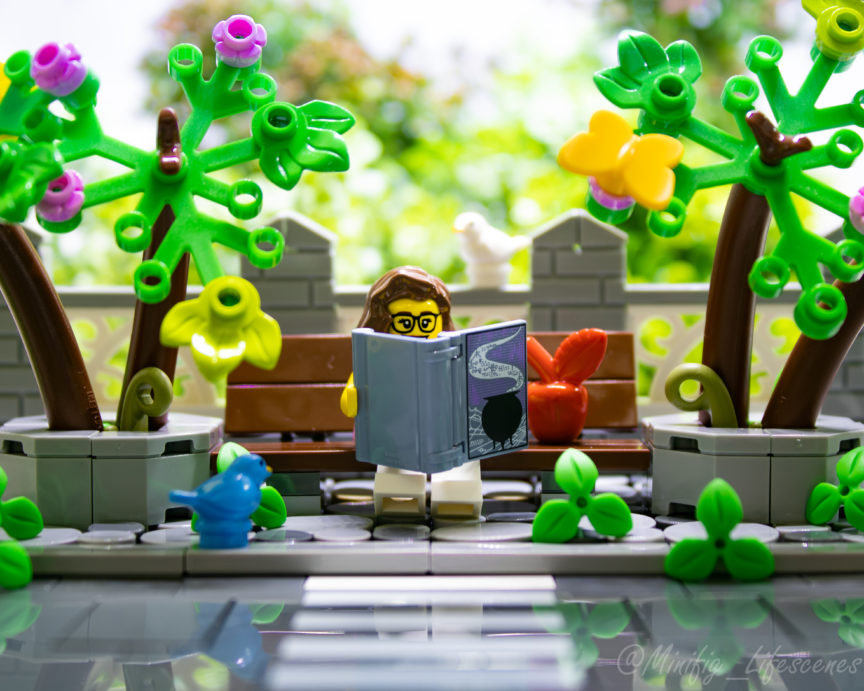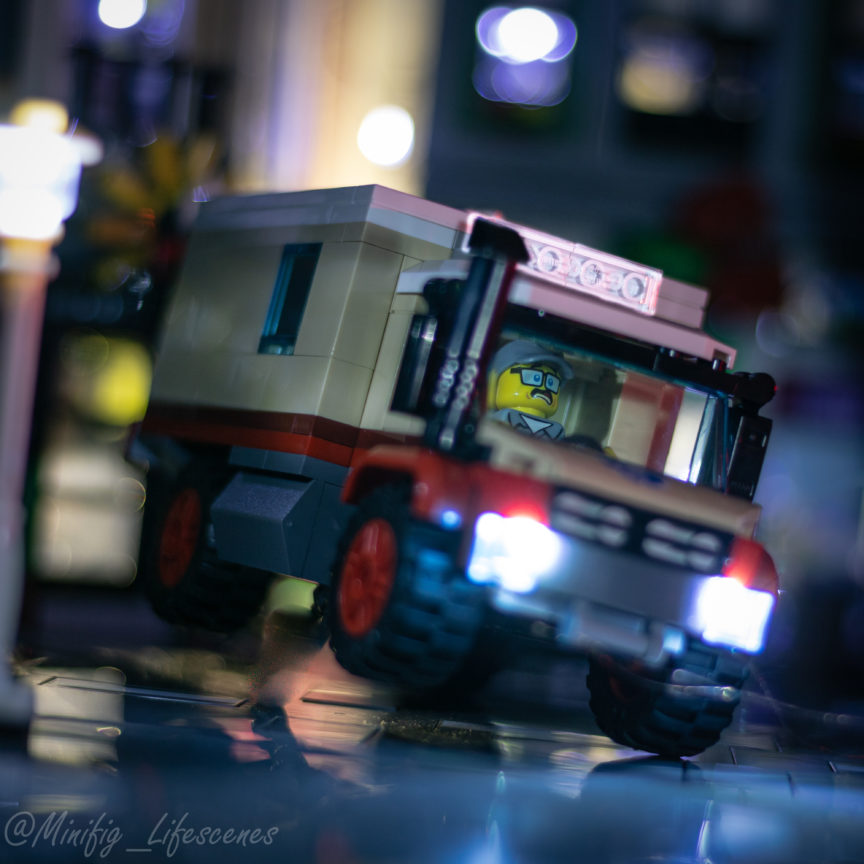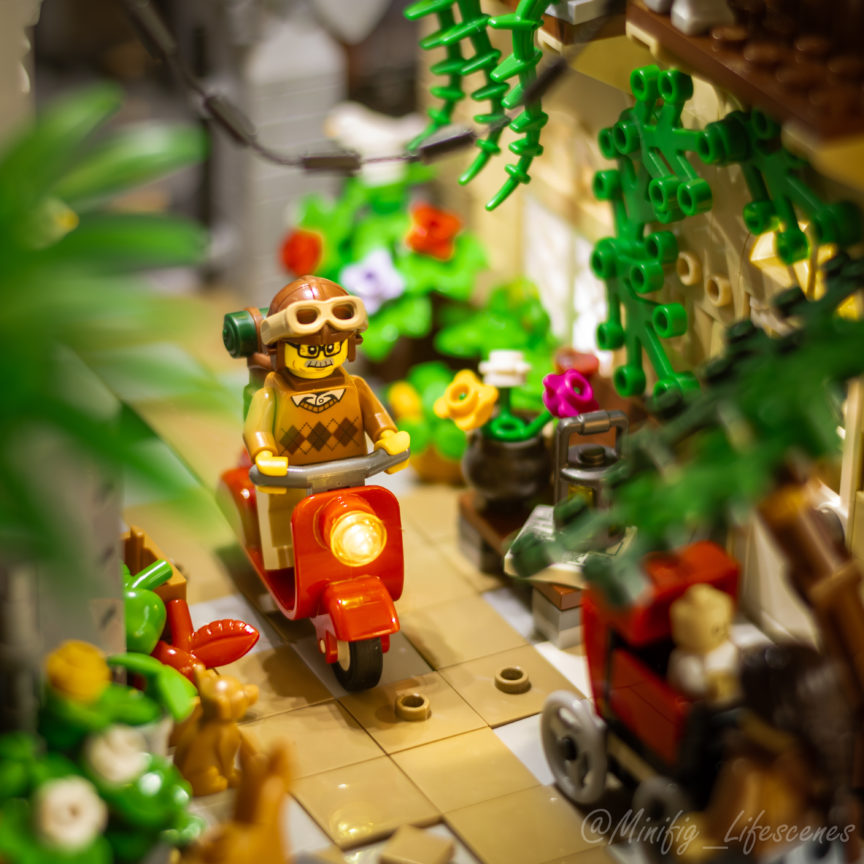Let’s talk a little bit about using camera angles in photography. This subject isn’t new at BrickCentral. Recently (August 2021) we had the monthly challenge #bc_pov (from @Nocturnelle9) which refers to a camera angle “Point of View”. In July 2020, @Foolishbricks talked about this in one of his tips. I strongly recommend revisiting these.
While this is a basic subject, camera angles are much more than the mere position of your photographic equipment. The way you frame the characters or theme conveys a message to the viewer. A simple camera angle can add drama, perspective, and a level of sophistication to your photography. You can take advantage of these tools to enhance the feelings you seek to convey (powerful, vulnerable, intimate…), whether to create more emotional scenes or enhance the storytelling.
Eye-Level Shot
This is considered a normal angle and is intuitive: eye-level shot is when the level of your camera is placed at the same height as the eyes of the characters in your frame. This simulates standard human vision and creates a familiar relationship between the viewer and the character. This can be used to convey familiarity and humanize the scene, to create empathy and a certain intimacy with the character. Generally, eye-level shots connect you to the emotions of the character, so whichever emotions they are feeling, hopefully so will you feeling too.
LEGO is one of the toys that allows you to transmit a lot of emotions due to the facial expressions of the heads that can be recombined, so take advantage of this incredible feature.
Let’s look at some examples. They are all simple images, yet they allow eye-level contact to transmit feelings immediately to the viewer, even though there is no direct “eye-to-eye” contact (minifigure in profile or from the back).
Low angle
A low-angle shot is a shot from a camera angle positioned anywhere below the eye line, pointing upward. It can even be below the character’s feet which is called an extreme low angle shot.
Low-angle shots are often used to convey power, and depending on your subject, that power can be a good thing or a bad thing. It can also be used to convey an idea of transcendence, depending on the composition of the scene.
LEGO minifigures are very small and it can be difficult to get a low angle. The best way is to place the subject at a higher level or position the camera below the level of the composition, but this greatly limits framing. This won’t be a problem if you use a smartphone, just turn it upside down and you’ll get it.
In the examples, it is easy to see how the low angle generates empowerment as in the image of the king and the prancing horse. This holds even if the character is scared like in the fisherman’s photo. On the other hand, in the photograph of the explorer and the elephant, the angle brings a sense of transcendence, of a superior contact with the surrounding nature.




Dutch Angle
A Dutch angle (Dutch tilt, oblique angle) is a type of camera shot that has a noticeable tilt to the camera’s “horizon line”.
The use of the Dutch angle is meant to indicate to the viewer that something is wrong, disoriented or disturbing. This angle distorts the audience’s perspective, creating a bond with the same orientation experienced by the character in the scene. This can also be used in action or emotional scenes as it helps to increase the dynamism.
You can combine the Dutch angle with any other camera angle, which makes this angle very versatile. But be careful with using this angle so that the misalignment is not confused with a framing error.
High angle
A high-angle shot is when the camera looks down on the character or subject from an elevated perspective. This can range from a shallow angle just above eye level all the way to directly above the subject. The high angle can mean many things and it depends a lot on the scene set.
The first and most intuitive use is to generate the opposite effect of low angle. If the low angle increases the character empowering him, the low angle decreases, making him vulnerable (or other feeling related).



High angle can also be used to show things in the scene that would hardly be seen from another angle. It can be used when there is an intention to show a space with a lot of visual information or when the surrounding elements are needed to compose the scene. Lego photographers use this angle a lot to insert minifigures into MOC sets and achieve harmony/dialogue between character and environment.
Below I’ve compared the same scene from different angles to demonstrate how the choice of angle makes a difference in the message the photograph conveys. The first photo was taken at a very subtle low angle (almost eye level). The biker becomes the main subject in the photo. When this scene is captured from a higher angle, the rider remains the main subject, but now he is inserted in an environment and this combination generates new meanings for the viewer.
There is another use for the high angle. It can be used to convey feelings to the viewer, in general, exploring every human’s natural fear of heights. Using the extreme high angle can simulate this terror and establish tension.

Considering LEGO photography, the minifigures’ lack of articulation, especially the head (looking up), can make it difficult to take advantage of this angle. The dismemberment of the minifigures and the use of fixative putty can be a good tip to make the most of the dynamism that this angle and others can offer. I know this is criticized by some and overused by others. In short, it’s a matter of style. What I mean is that this feature is very useful when coupled with extreme angles, particularly in terms of head position.
Aerial
Aerial photos are photos taken from a higher vantage point than the one framed in the photo. This is a variation of the high-angle shots, but here we raise our camera even higher until we reach an unusual viewing angle for the normal human context. For this reason, this angle is also known as the bird’s view or God’s view. It is precisely this way of looking at things out of the ordinary that allows us to use it to convey different sensations and create emotional, philosophical or expressive photos, depending on how you compose the scene.
Aerial shots help to demonstrate the world the characters inhabit (positively or oppressively). It’s as if a bird is flying over the scene and seeing everything that happens around. This allows a deeper understanding of what’s going on below, which would be impossible to understand if you were viewing from a “normal” position. This higher view also can favor the composition with geometric shapes that arise from this differentiated vision.



This angle can also be used without the elevation being so high as to lose intimacy with the character. Through the overhead shot (a high angle shot almost directly or literally directly above the subject) it is possible for the viewer to see the scene “from the outside” but still maintain a deep connection with the character. Understand this as if the spectator were the very “eye of God” watching that character stuck in the world and probing his deepest feelings.Therefore, this angle can also be used to convey intense emotions.




Final considerations
The next time you’re shooting, consider what kind of emotion you want to convey and choose an angle that favors that. You may also struggle to shoot at angles that are unusual for you. This is a great tool to develop creativity.
I hope these tips are useful for your next photographs!













I loved how you explained the impact of different camera angles in storytelling! The examples you provided really brought the concepts to life. Can’t wait to try out these techniques in my own photography. Thank you for the inspiration, BrickCentral!
This post really opened my eyes to the importance of camera angles in photography! I never realized how much they can change the mood and perspective of a shot. The examples you provided were incredibly helpful. Can’t wait to experiment with these techniques in my own work!